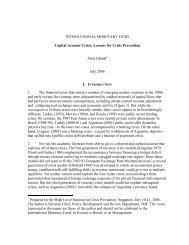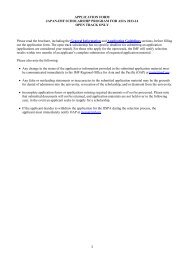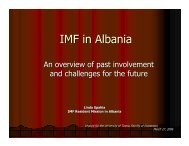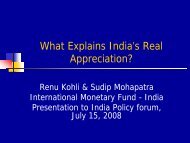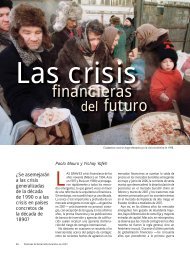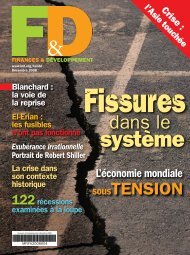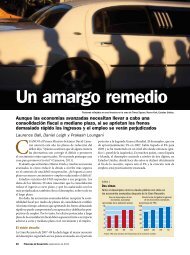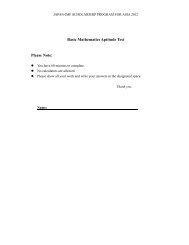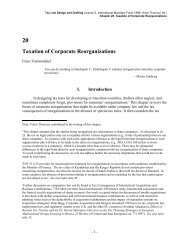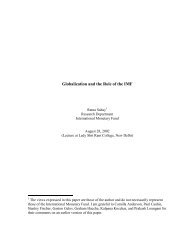Competition Policy and Monetary Policy - Per Jacobsson Foundation
Competition Policy and Monetary Policy - Per Jacobsson Foundation
Competition Policy and Monetary Policy - Per Jacobsson Foundation
Create successful ePaper yourself
Turn your PDF publications into a flip-book with our unique Google optimized e-Paper software.
Mario Monti<br />
<br />
1993 as a member of Eric Roll’s panel pleading the case for the<br />
independence of the Bank of Engl<strong>and</strong>. 1<br />
As you will soon recognize, I have since lost a lot of confidence<br />
in my knowledge of monetary policy, so it is with humility<br />
that I approach it, even though it is just one of the two key words<br />
in the headline of today’s presentation.<br />
My first reflection on monetary policy <strong>and</strong> competition policy<br />
compared is that they both serve in different ways the same<br />
objective, or at least they have one objective in common, even<br />
though their practitioners may not always realize it, <strong>and</strong> that is<br />
price stability. <strong>Monetary</strong> policy, of course, has the fight against<br />
inflation as its paramount objective. One might ask the question,<br />
as a recent BIS paper did, is price stability enough? What are<br />
the dimensions of stability to be cultivated by a central bank?<br />
Price stability may refer to output prices, or asset prices, <strong>and</strong><br />
so on, but certainly the objective of some price stability is at<br />
the core of monetary policy. Also, competition policy, although<br />
it is not primarily designed to achieve this, may indeed make<br />
an important contribution to price stability by helping to avoid<br />
price increases.<br />
I believe that monetary policies in most countries have been<br />
largely successful in recent periods in achieving their objectives,<br />
<strong>and</strong> I believe that in some parts of the world, maybe in Europe<br />
specifically, this has been facilitated by a number of positive supply<br />
shocks, including the setting in motion of conditions in the<br />
real economy of greater flexibility <strong>and</strong> also the creation of the<br />
single market, the tearing down of barriers, <strong>and</strong> the creation <strong>and</strong><br />
maintenance of competitive conditions. If we put together the<br />
creation of the single market, a number of liberalization initiatives,<br />
the enforcement of competition rules, plus, of course, the<br />
opening up to greater Chinese <strong>and</strong> other competition, this is a set<br />
of supply shocks that probably has helped the monetary authorities<br />
in their difficult task.<br />
In this context, one question also comes to my mind: what<br />
about the response to cycles of both policies? For monetary policy<br />
there was in the past the ambition of fine-tuning it in order to be<br />
precisely countercyclical, but at those Konstanz seminars the early<br />
1 Independent <strong>and</strong> Accountable: A New M<strong>and</strong>ate for the Bank of Engl<strong>and</strong> (London:<br />
Centre for Economic <strong>Policy</strong> Research, 1993).





